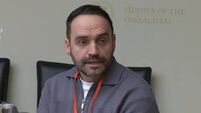Stroke admissions rise by almost a quarter

The proportion of patients who arrived at hospital within three hours of the onset of stroke symptoms decreased from 59% down to 46%, latest figures show.
The number of stroke admissions rose by 23% in the nine-year period between 2013 and 2021, with an increase in the proportion of patients under the age of 64.
The figure is contained in the Irish National Audit of Stroke (Inas) launched on Tuesday.
The report analysed data on 34,630 stroke patients who were admitted to hospital across nine years.
The proportion of patients who arrived at hospital within three hours of the onset of stroke symptoms decreased from 59% to 46%.
Data included also showed that there was a reduction in the proportion of patients aged 80 or above and an increase in patients aged below 64.
Launching this year’s report, Professor Joe Harbison said: "Our analysis of data from nine years has shown slow but significant areas of improvement in many areas and improved organisation and delivery of care in hospitals even through the challenges of the pandemic.
"The analysis has also shown the importance of reinforcing public education about recognizing the symptoms of stroke as delays to presentation to hospital are gradually increasing and ‘time is brain'."
Other key findings included:
- The proportion of patients who saw a doctor within 10 minutes of arrival at hospital increased from 23% in 2016 to 48% in 2021.
- The proportion of patients who had brain scan within one hour of arrival at hospital. increased from 20% in 2013 to 48% in 2021
- Thrombolysis is the breakdown of blood clots formed in blood vessels using medication. The IV thrombolysis rate fell from 11% in 2013 to 10% in 2021. This could be increased if people arrived in hospital as soon as possible.
- There was an increase in the proportion of patients with a stroke admitted to a stroke unit from 65% in 2013 to 70% in 2021 (below the target of 90%).
- The median hospital length of stay has reduced from 11 days in 2013 to eight days in 2021.
- There was an increase in the proportion of patients discharged home with Early Supported Discharge (ESD) from 2% in 2017 to 10% in 2021.
Martin Quinn, public representative on the Inas Audit, said: "I am a stroke survivor, having suffered a stroke in 2013 and my message is clear.
"In order to recover there must be a full complement of treatment services available and there must be clear preventative messaging on the warning signs of stroke. 'Time is Brain' is not just a slogan it is a fact and your life could depend on it."









